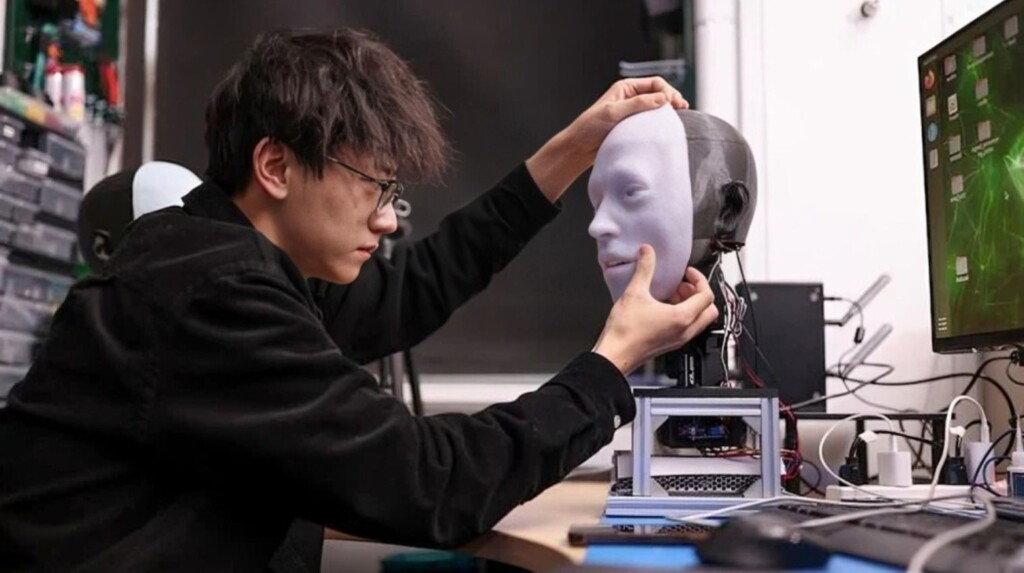Researchers at Colombia University have recently introduced “Emo,” a groundbreaking humanoid robot capable of mimicking facial expressions in real-time. This innovative creation represents a significant advancement in the field of robotics, particularly in the realm of replicating human-like behaviors.
Emo’s ability to emulate facial expressions, including smiling before the person does, is a notable feat in the realm of artificial intelligence and robotics. This capability addresses a longstanding challenge in the field, where previous attempts at mimicking human expressions often fell short due to noticeable delays, resulting in interactions that felt artificial and disappointing.
To overcome this challenge, the team behind Emo, led by Hod Lipson, employed a multidisciplinary approach, combining expertise in AI and robotics. The result is a humanoid robot equipped with 26 actuators strategically placed to replicate realistic muscle movements necessary for nuanced facial expressions. These actuators, along with high-resolution cameras embedded in Emo’s eyes, enable the robot to establish eye contact and mirror human expressions effectively.
Central to Emo’s functionality are two AI models developed by the researchers. One model predicts human expressions, while the other controls the actuators responsible for manipulating Emo’s silicone skin. These AI models were trained using extensive datasets of facial expressions, allowing Emo to learn and replicate even subtle facial muscle movements within a short period.
Despite its current limitations in verbal communication, Emo holds promise for future integration with advanced language model systems like ChatGPT, enabling more interactive and engaging interactions. Lead author Yuang Hu suggests that future iterations of Emo may incorporate enhancements such as improved lip movement and a full-body design, further expanding its potential applications in assisting humans. As the field of humanoid robotics continues to evolve, Emo represents a significant step towards creating lifelike robots capable of seamlessly interacting with humans in various contexts.
